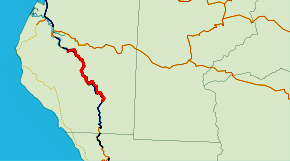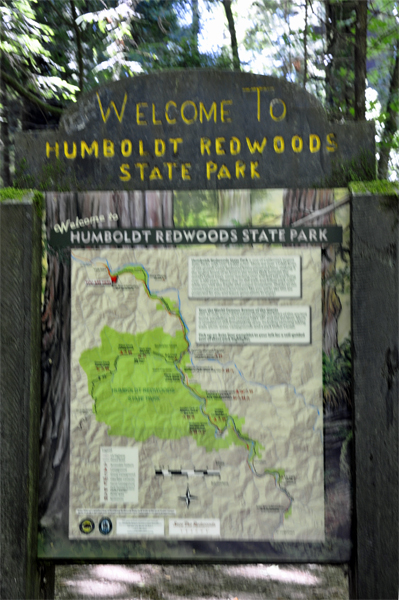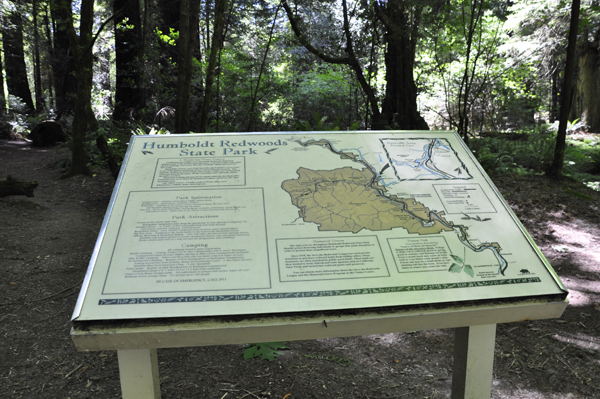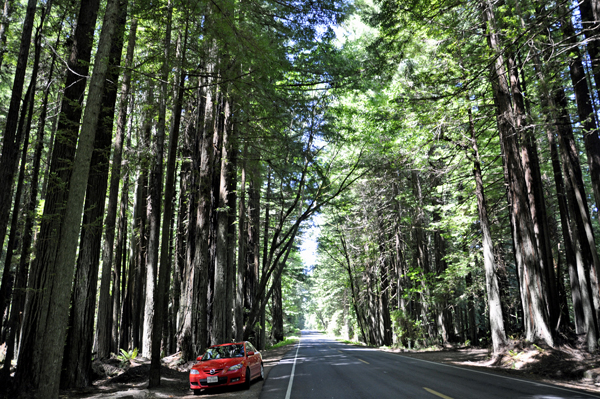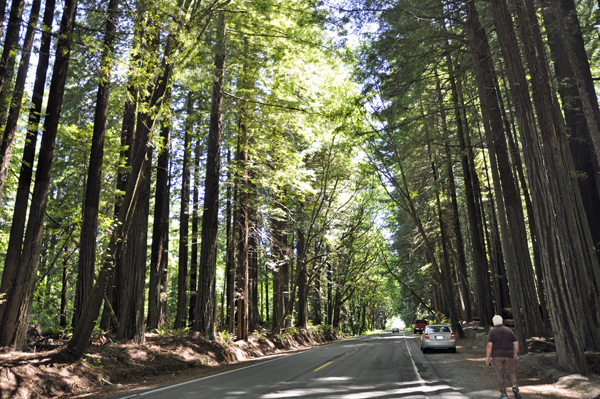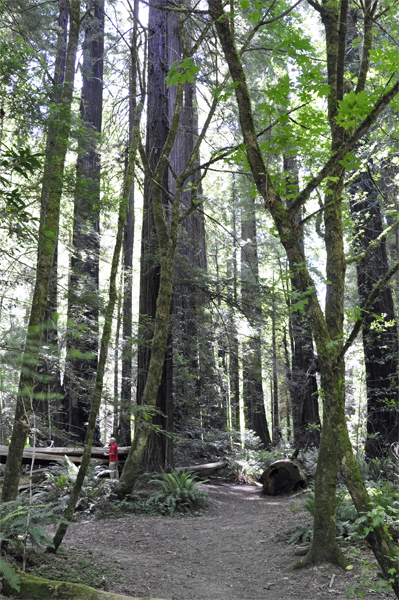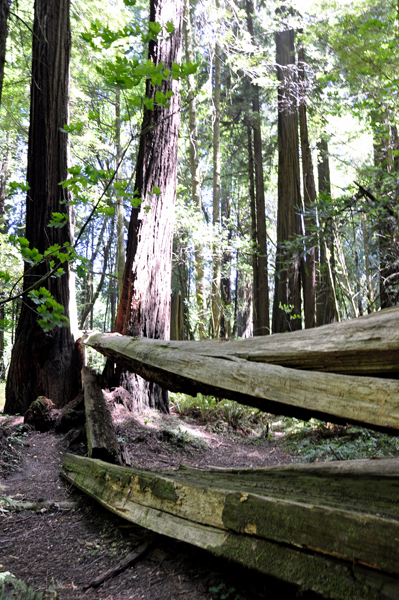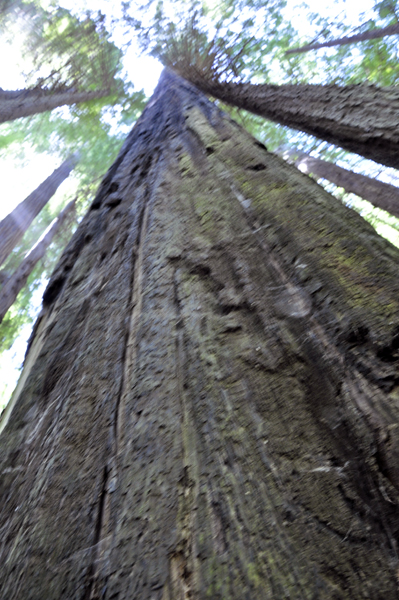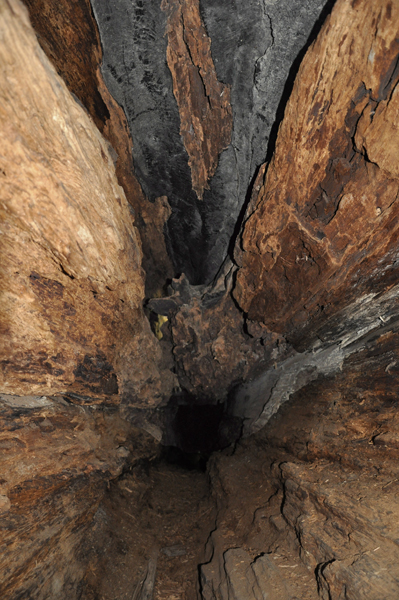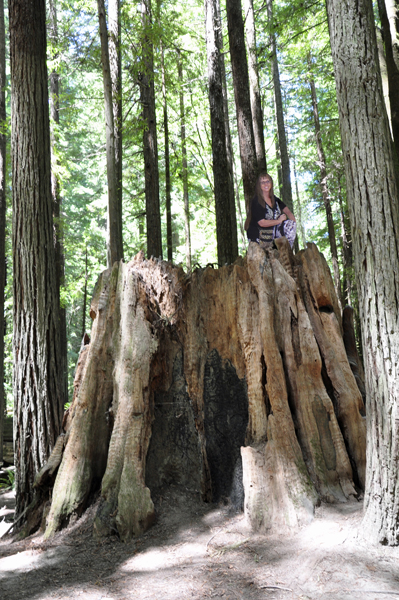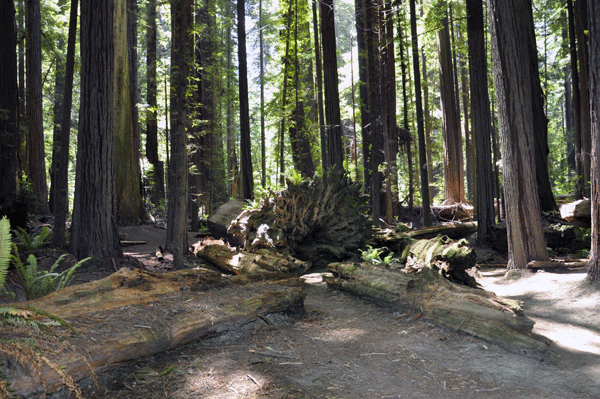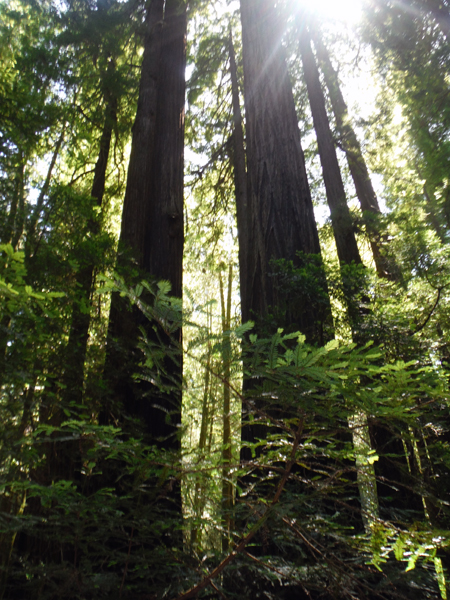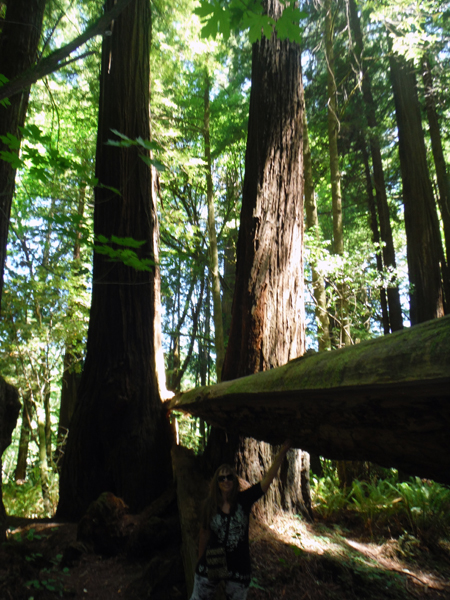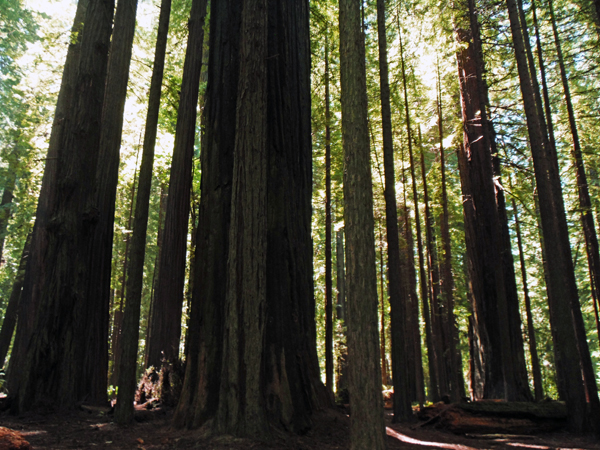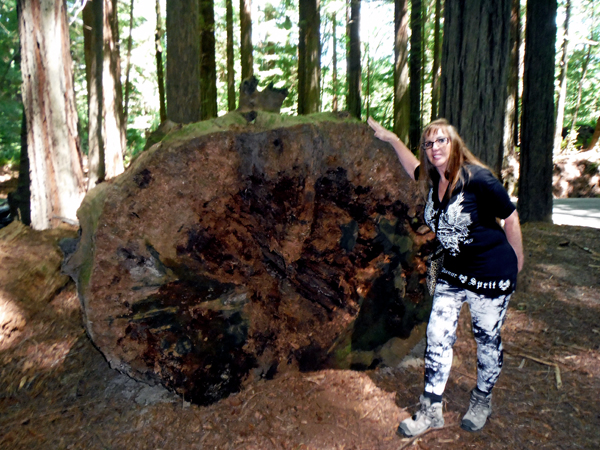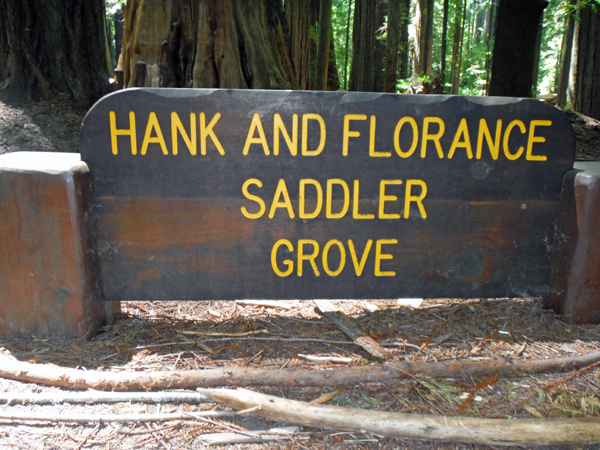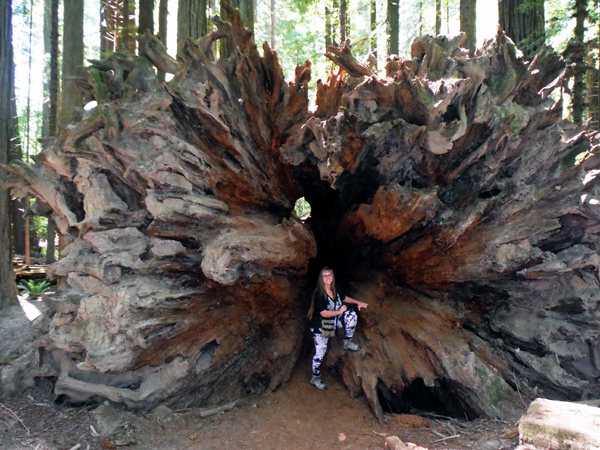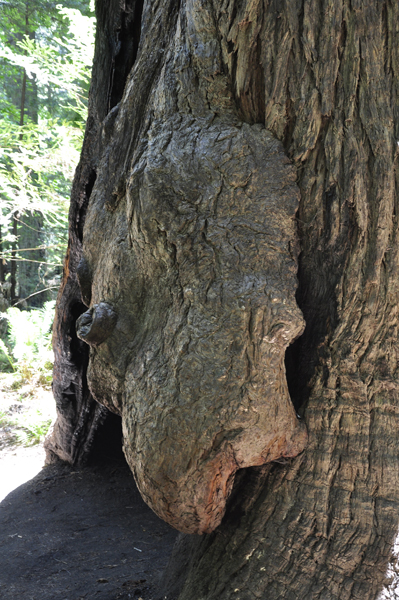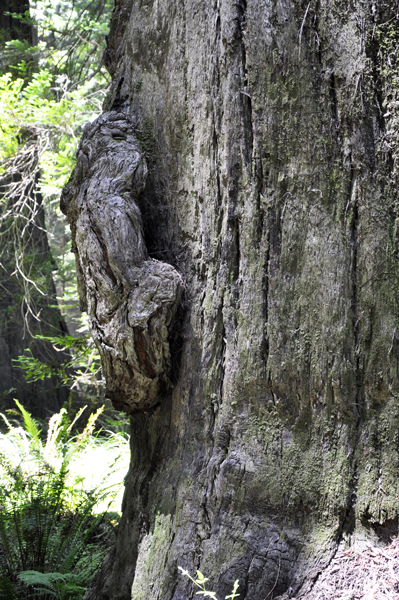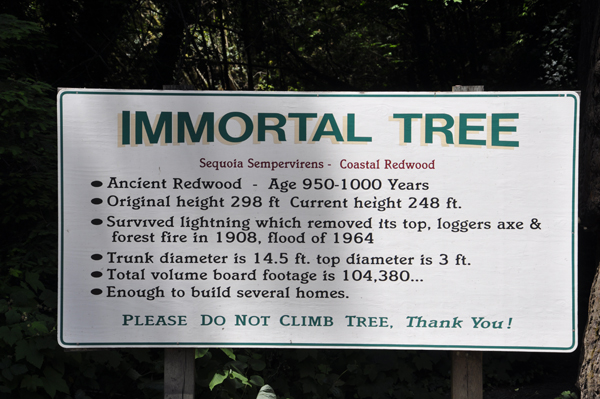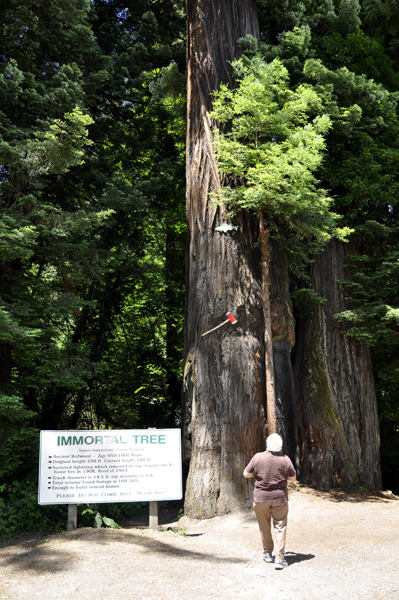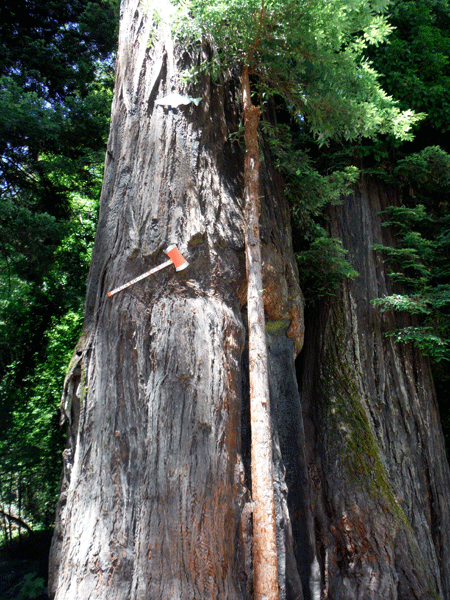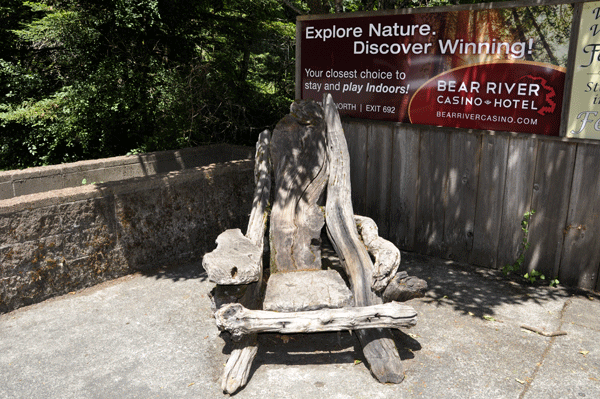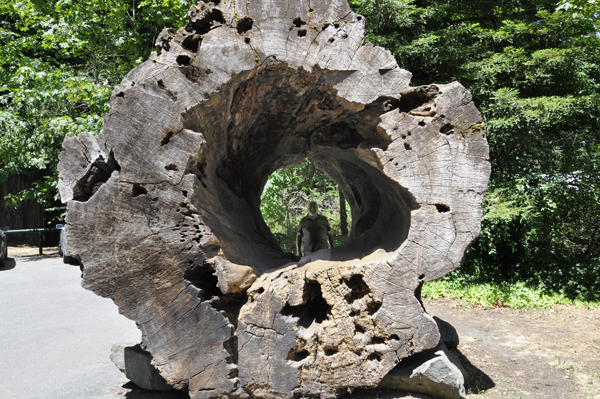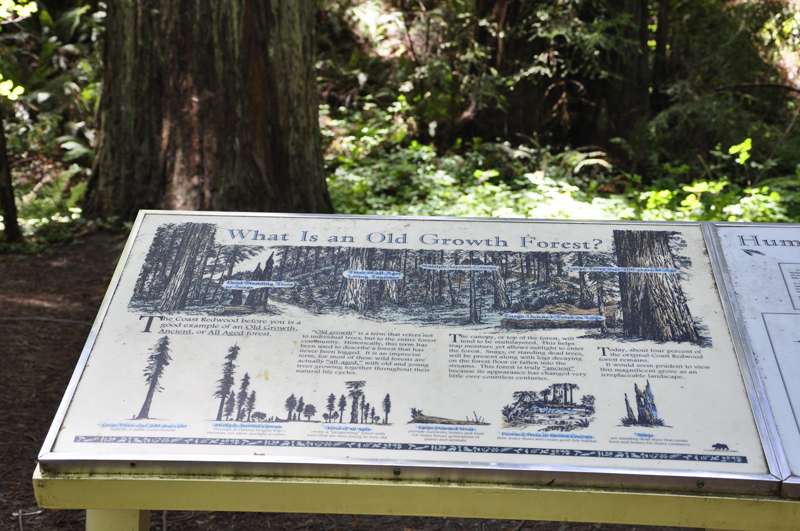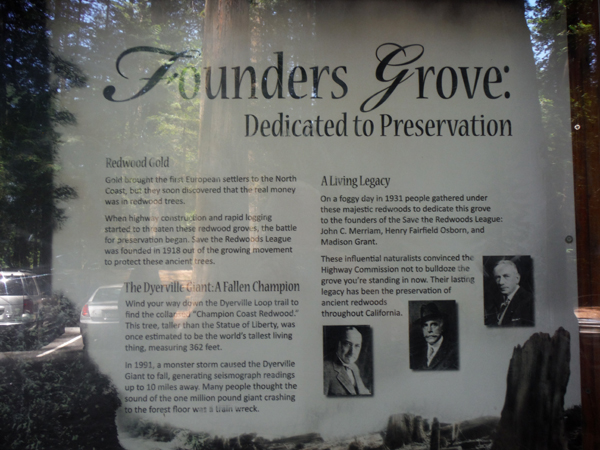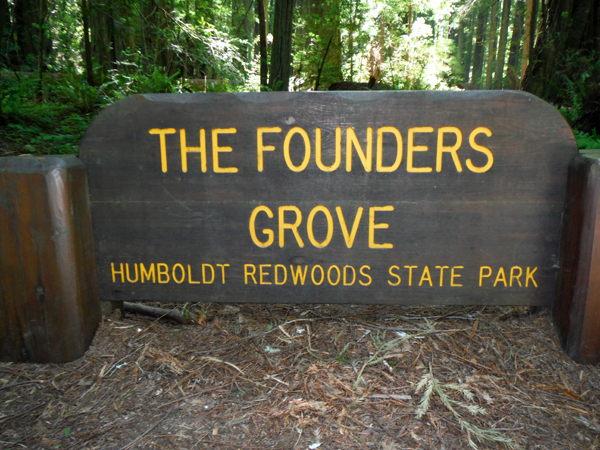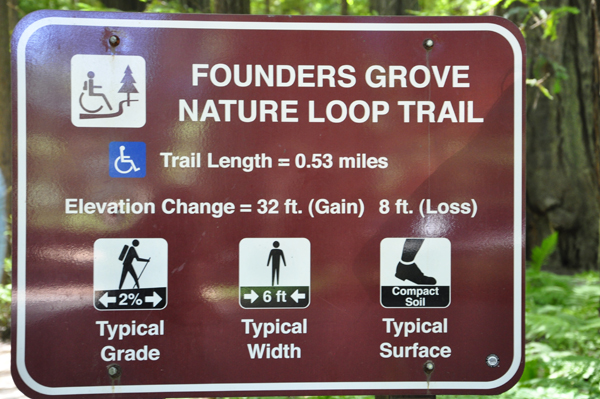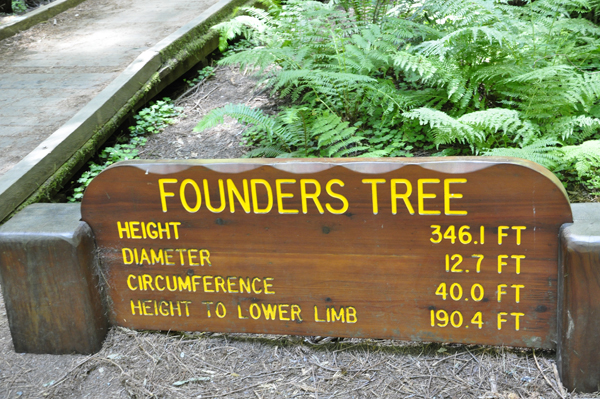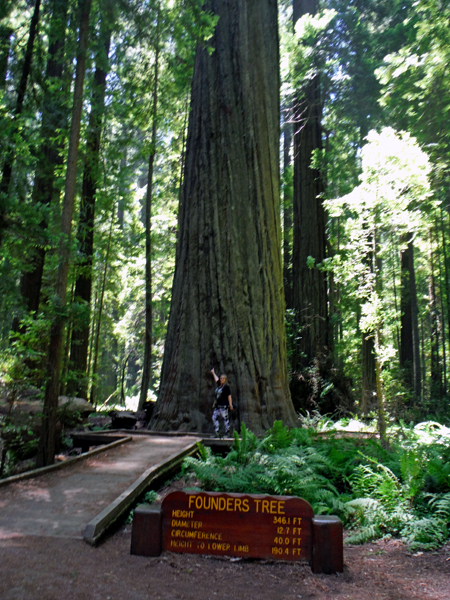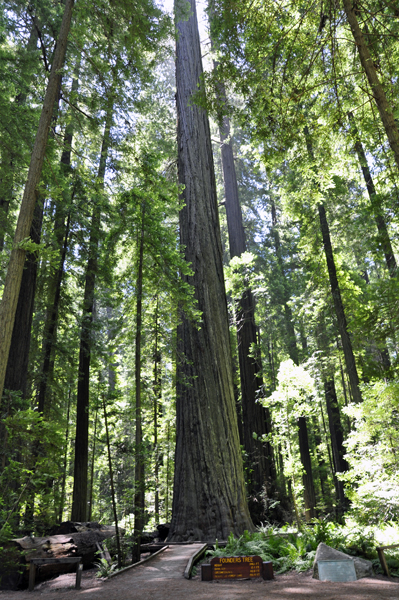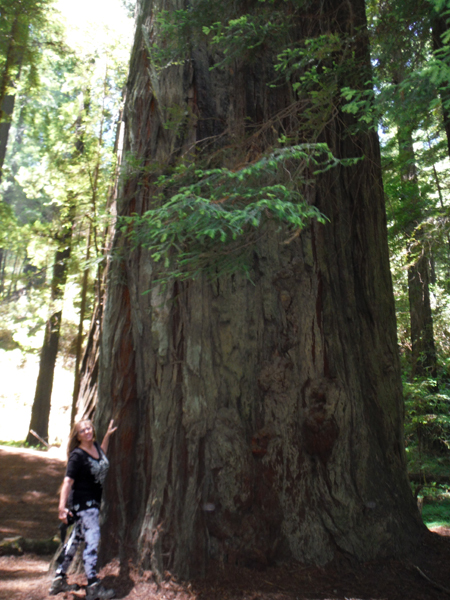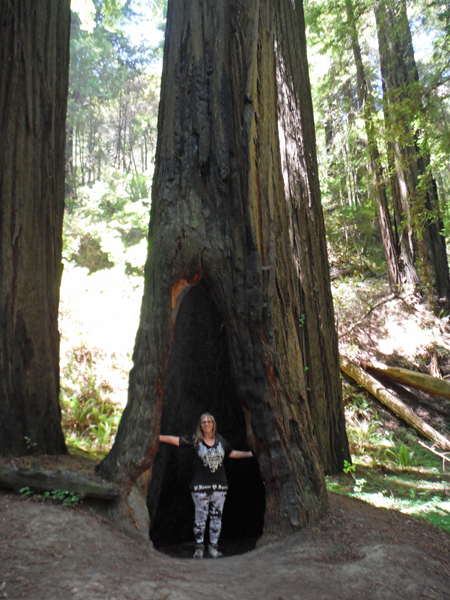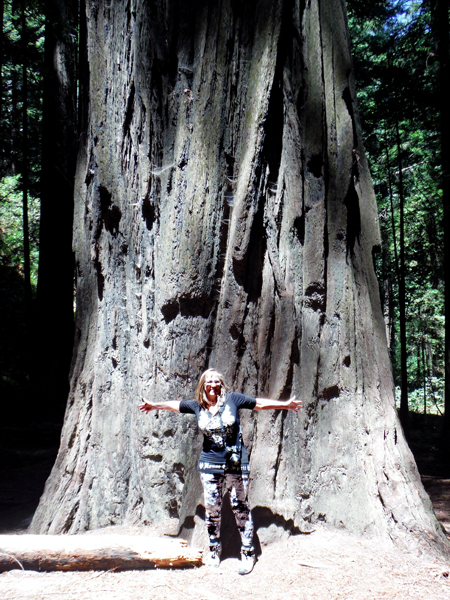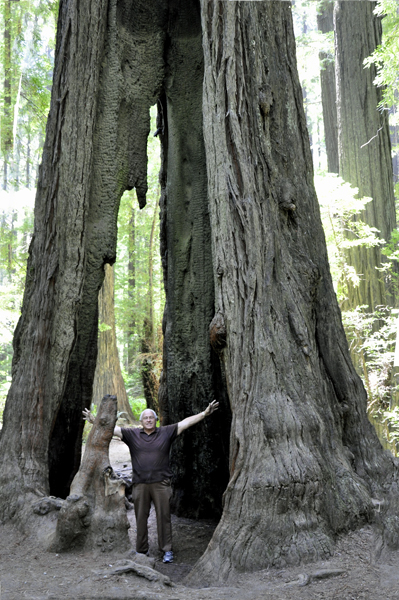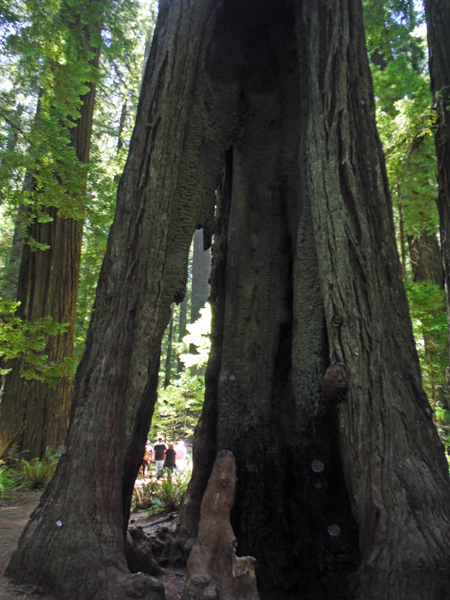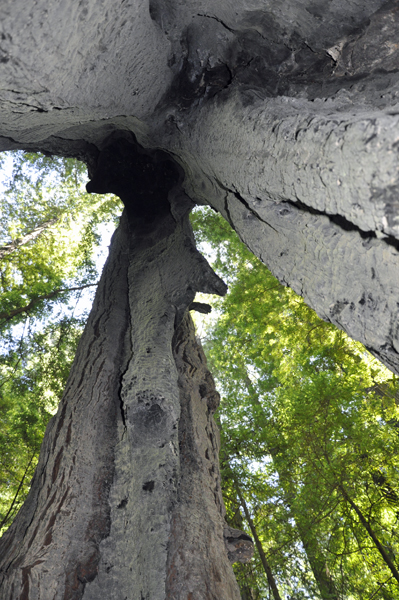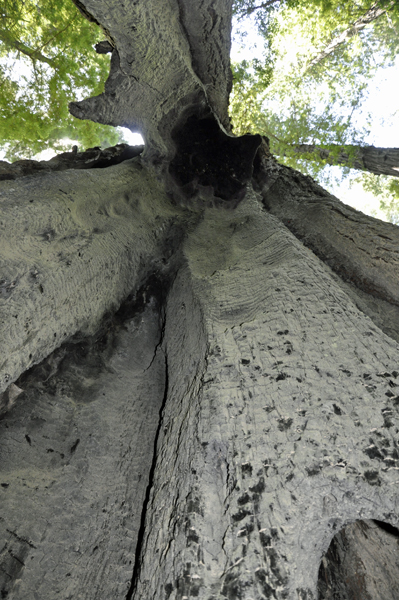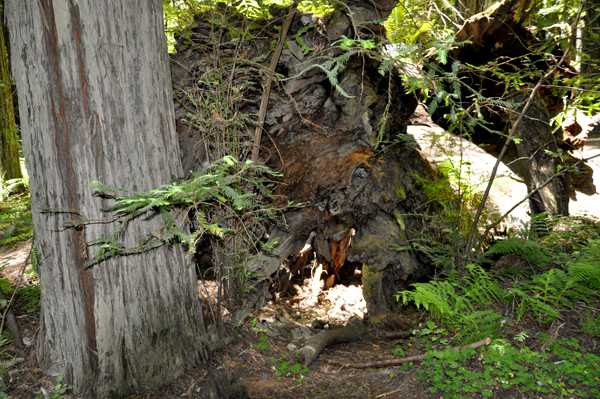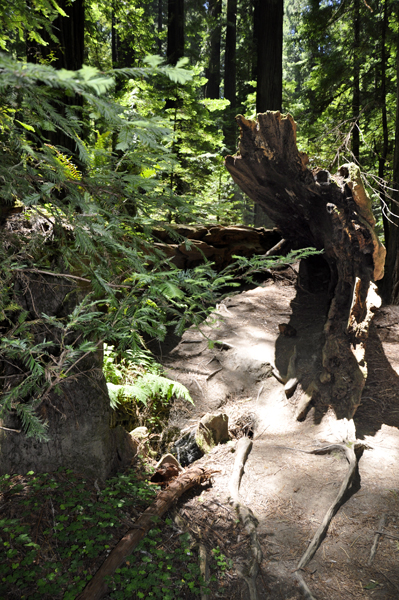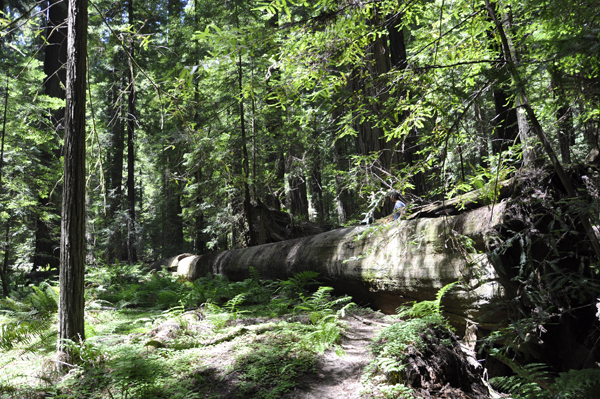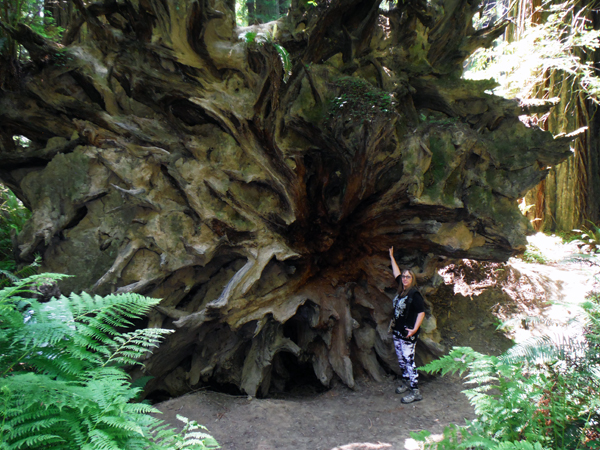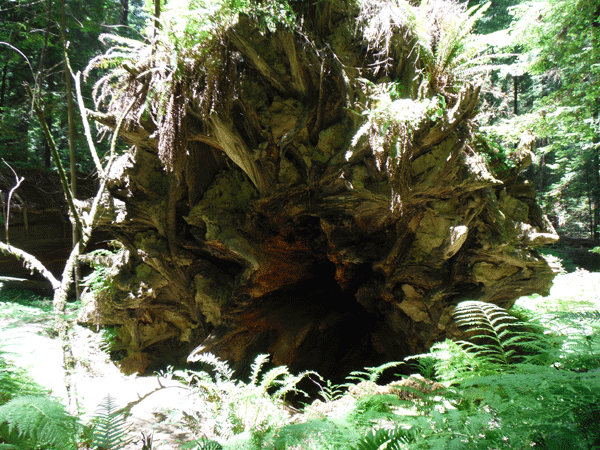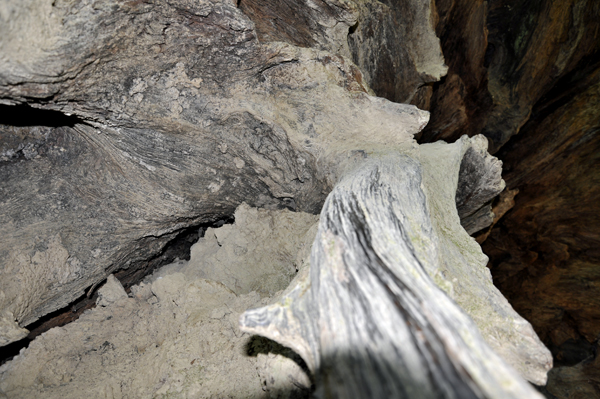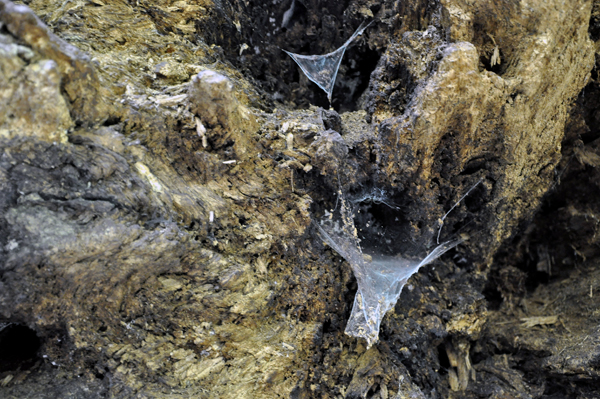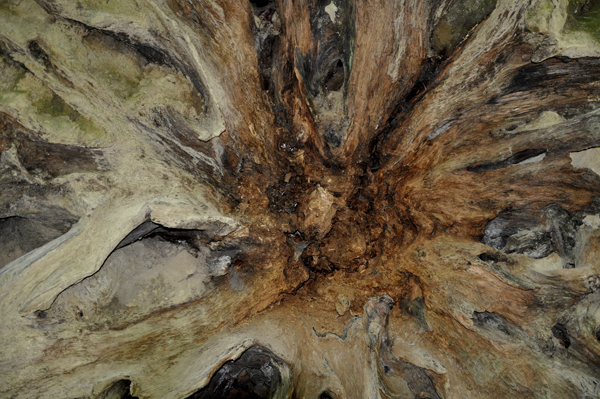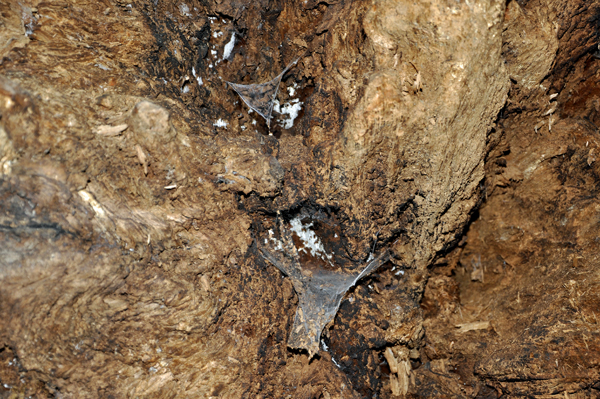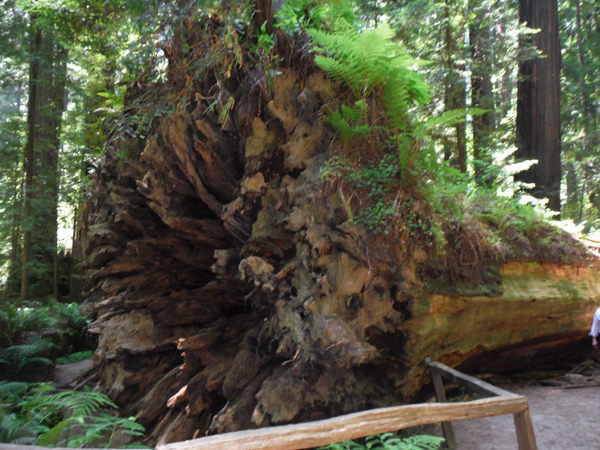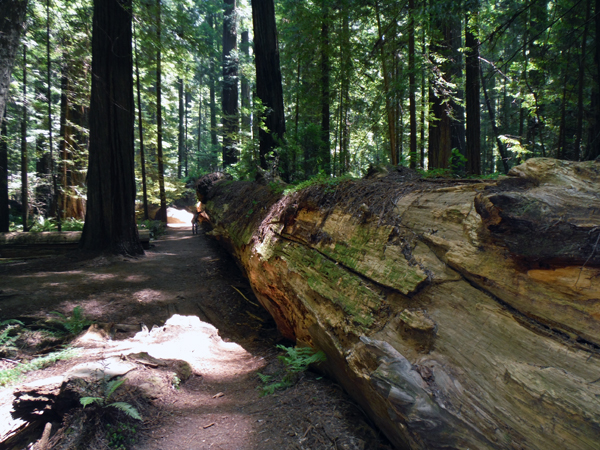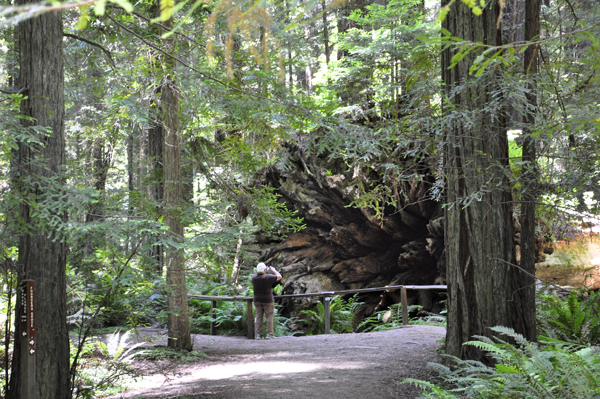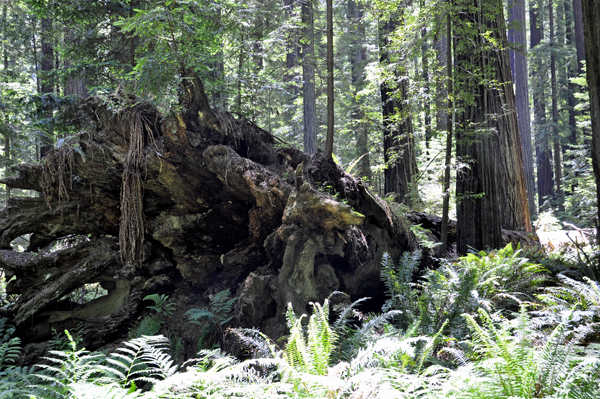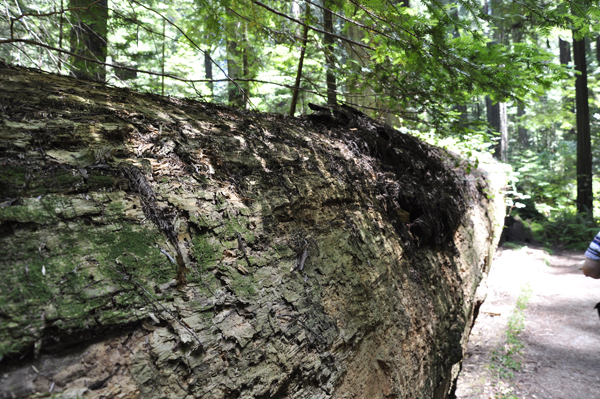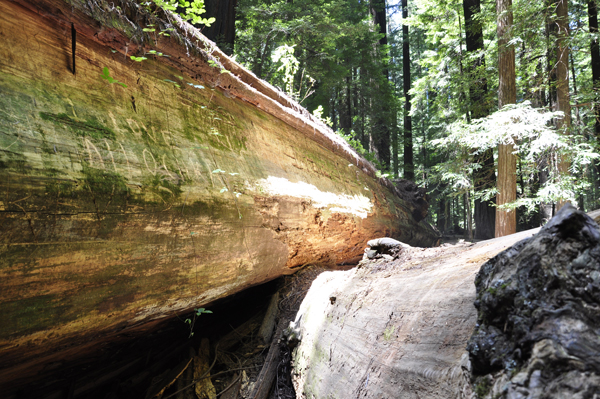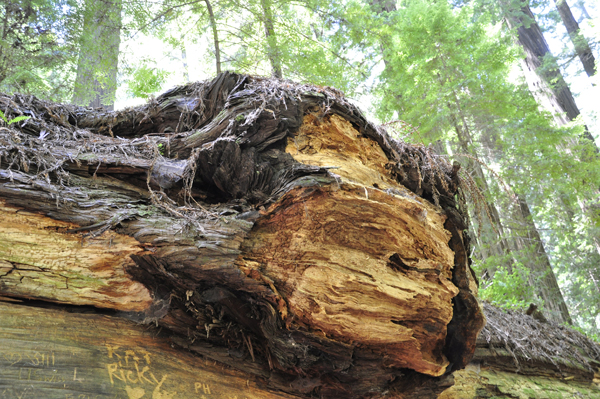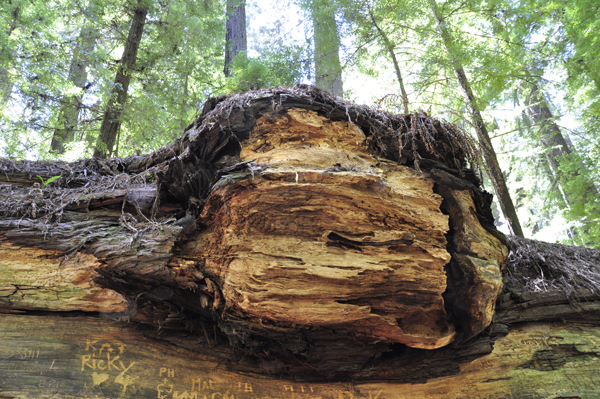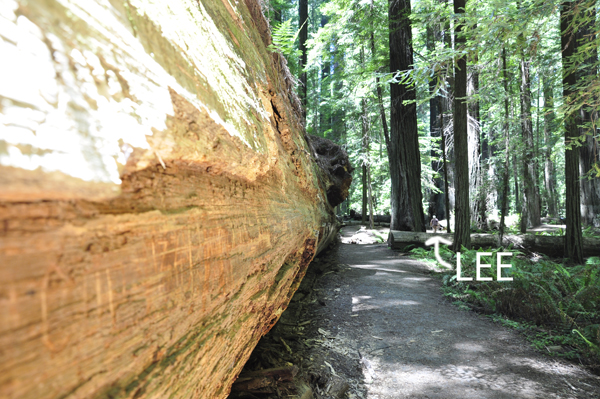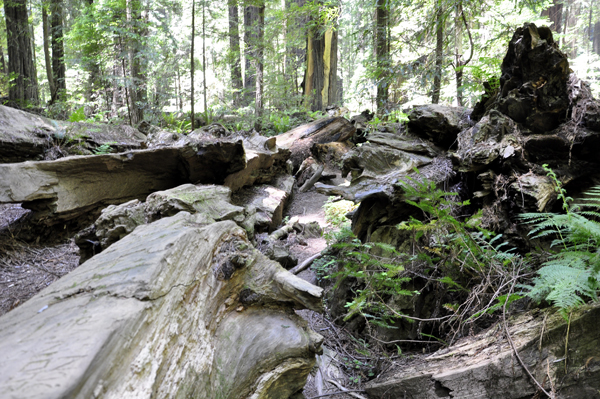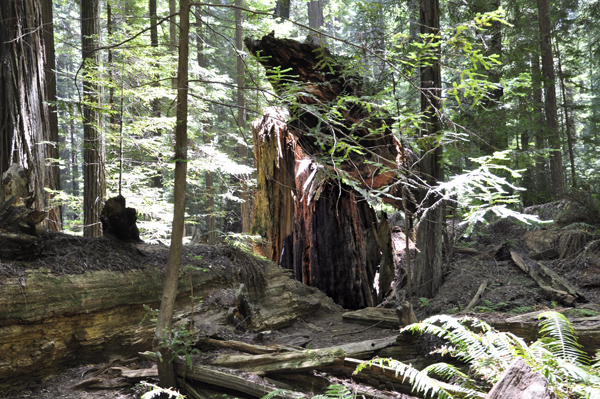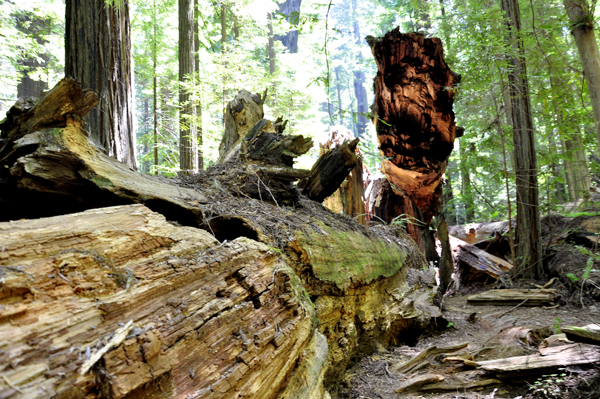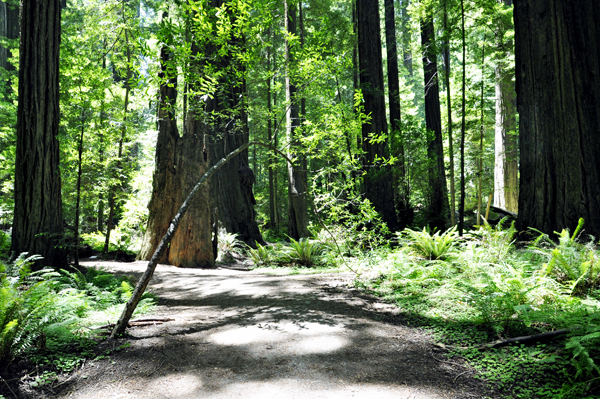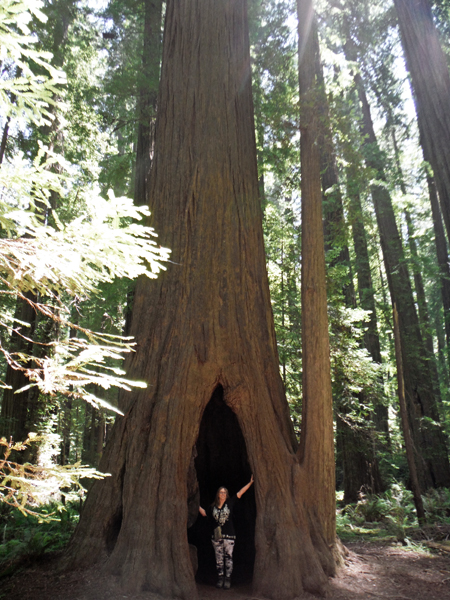Immortal Tree
Though not the oldest redwood in the forest, this large
tree is over 950 years old, and is currently around 250?feet tall, though
originally it was much taller. It has survived not only the ravages
of time but also the 1964 flood of the area, a 1908 attempt at logging,
and a direct lightning strike which removed the top 45 feet of the tree
(making its original height close to 300 feet). It is from its age and
the perceived hardiness to the fates that the tree derives its name.
Markers were visible on the tree, denoting the heights of where the
loggers' axes and the floodwaters struck the tree.
Situated in the northern half of the Avenue, The Immortal
Tree was easy to find, and had a large gift shop and parking area in
front of it. |
|
|
|
| |
|
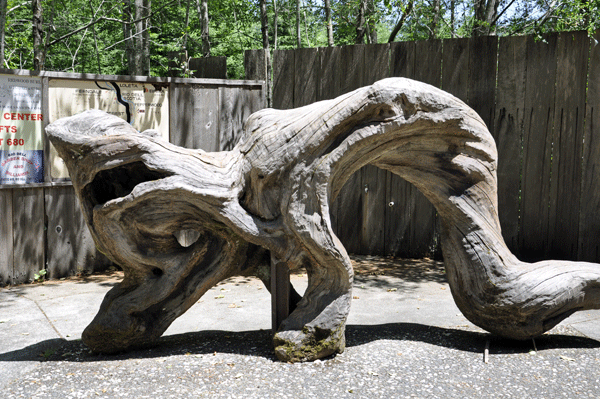 |
Below: Lee Duquette was dwarfed as he
stood outside of the tree remnant shown below. |
|
|
| |
Founder's Grove
Near Weott, this grove had an easy 1/2 mile self-guided walk with informational
booklets available at the beginning of the trail. This well-traveled
trail is a good example of old-growth redwood forest and contains a
few very big trees, including the Founder's Tree (346 feet tall) and
the Dyerville Giant (370 feet tall) which fell down in 1991. |
|
|
|
|
Below: Karen Duquette by the Founders
Tree |
|
|
|
| |
The greatest accumulation of plant mass
ever recorded on earth is a redwood standing here in Humboldt Redwoods
State Park. This temperate rainforest has seven times the biomass (living
and dead organic material) of that found in a tropical rainforest. Everything
seen here has an interconnecting role with the rest of the forest, from
the huge trees to the smallest decaying plant material. |
|
|
The terms "Ancient Forest", "Old Growth Forest" and "All-aged Forest" have been used synonymously. An ancient forest describes a forest that has trees of all ages, many layers of canopy, large standing dead trees, large downed logs, large fallen logs in streams, and trees over 200 years old. |
|
| |
The large redwood below is an old growth tree that has been through may fires, a natural occurrence throughout the centuries. Even though it appears to be heavily fire damaged, it continues to live. Below are several views of the tree. |
|
|
Below: Looking up into the tree. |
|
|
| |
The death of a tree is the birth of a log or a snag. Dead trees are essential to the health of the forest and they are the basis of its astonishing productivity. |
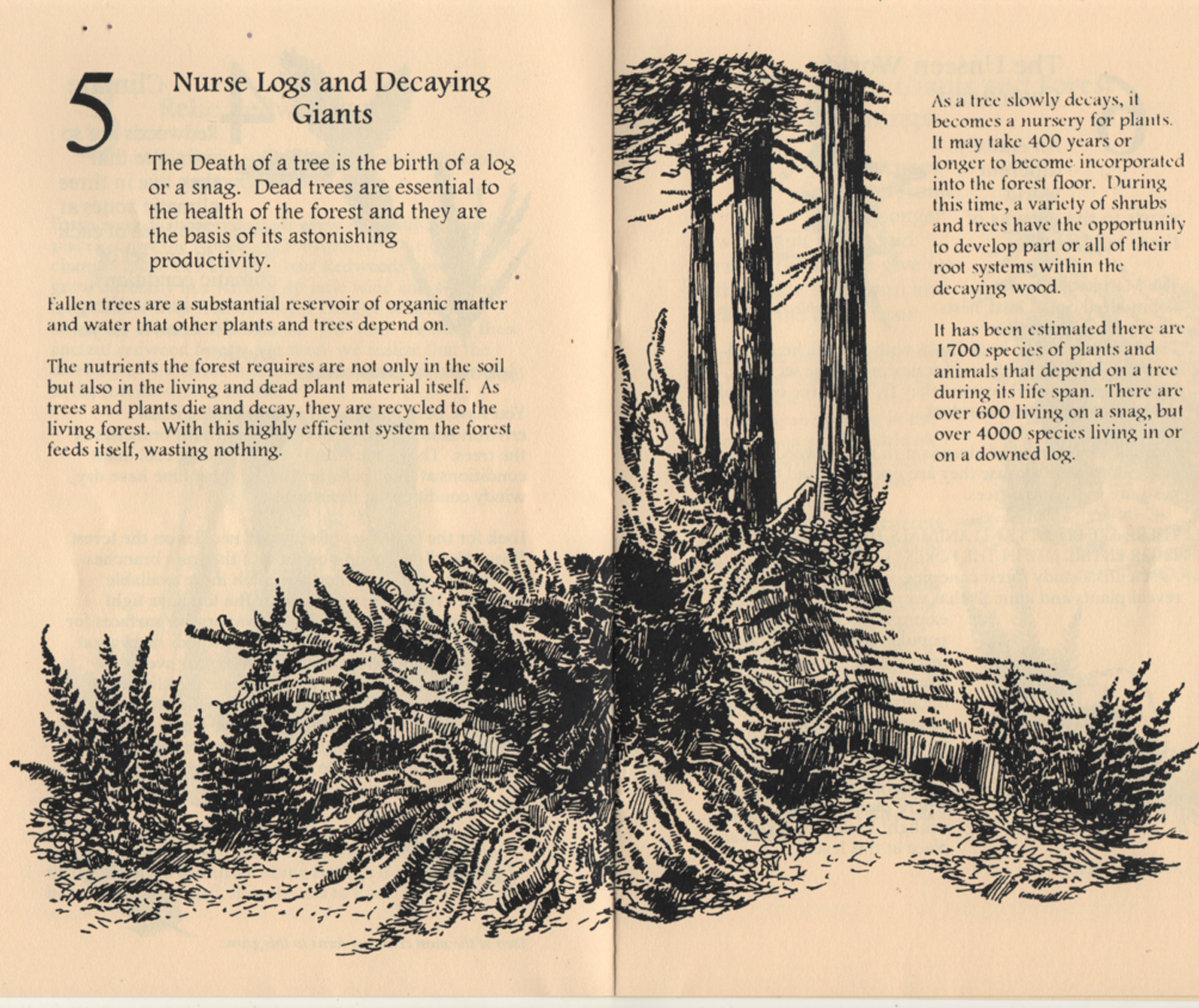 |
|
|
|
| |
Below: The Dyerville Giant stood here perhaps for as long as 1600 years. It was taller, larger and older than any other trees around it. It was recognized as a Champion Coast Redwood as certified by the American Foresters Association until it fell on March 24, 1991. Before it fell, it was at estimated between 362 feet tall and 370 feet tall. That is 200 feet taller than Niagara Falls, or comparable to a 30-story building. It is 17 feet in diameter, 520 feet in circumference and probably weighed over 1,000,000 pounds. |
|
|
|
|
|
|
The events that caused the Dyerville Giant to fall are common in ancient redwood forests. During the rainy season the soil got saturated with water, causing a tree to fall and it hit a second tree, causing it to lean. Eventually the leaning tree fell and it struck the Dyerville Giant, causing it to fall as well. A tree over 50 feet away had mud splattered 15 feet up its trunk from the impact of the giant hitting the ground. Unless fire consumes it, the Dyerville Giant will continue to lie here on the forest floor for may hundreds of years, fulfilling an important role in the healthy life of an ancient forest. As the decay process gains a hold on the Giant, it will become the host, home, and food source to over 4,000 kinds of plants and animals that will live on or in it. |
|
|
| |
|
|
|
|
|
|
Below: The two RV Gypsies took a picture
of each other at separate ends of the same tree. |
|
|
|
|
|
|
|
|
Menu for the two RV Gypsies in California. You may view these 4 sections in any order you choose. There is also a link to Oregon at the bottom of this page.
You do not have to return here to continue from page to page because there is a link at the bottom of each page for further navigation. |
Section 1 of 4: San Diego |
|
|
|
|
|
|
|
|
|
|
|
|
|
Section 2 of 4: Los Angeles County |
|
|
|
Section 3 of 4: San Francisco |
|
|
|
|
|
Section 4 of 4: The Redwoods - Giant trees and more |
|
|
Avenue
of the Giants (this page) |
|
|
|
|
|
|
|
|
|
|
|

